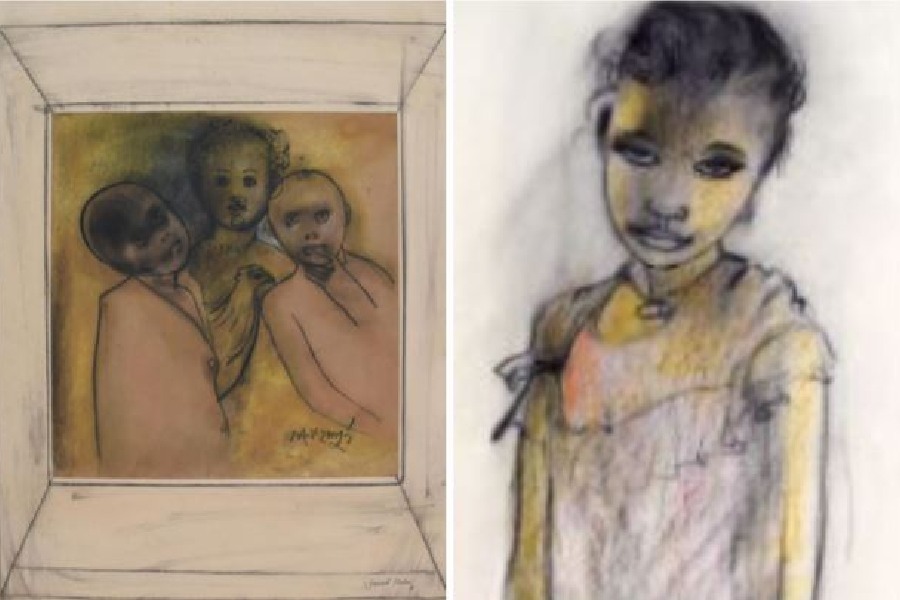Ganesh Haloi is known for his paintings in which he summons up his memories of verdant and riverine landforms of his early homeland at Jamalpur in what was once East Bengal and turns them into formal compositions. These compositions, often with the rigour of geometry but with the rhythm of poetry, are, in reality, reflections of the artist’s mind.
Yet at his age — he was born in 1936 — the still practising artist has some surprises in store for viewers. For the first time ever, Ganesh Haloi is exhibiting from Sunday a series of 12 large portraits. The exhibition at Debovasha’s Selimpur Road gallery is titled Presence & Absence.
These are intense and brooding line drawings on paper (only one on board), mostly of dark-skinned children of indigenous people. The children in earthy browns and greens have large, deeply expressive eyes, snub noses and full mouths. Their gaze fixes viewers. There are besides, a middle-aged woman defined with strong contour lines, and an old woman conversing with a younger man, possibly her son.
Pastel is the favoured medium and he has occasionally used gouache as well. The biggest of these works is 31X20 inches, and the smallest 16.4X15 inches. These were all done within a span of two to three months in 1995.
So why did the artist take so long to exhibit them? “I am associated with landscape paintings which many term abstract, although I don’t agree with them. These figurative works are so different. But I did mean to show them some time,” Haloi said.
“These are not images of any particular human beings. But I am there. That isn’t untrue. I have always been drawn to the gaze of children. Their eyes are as guileless and sad as nature herself — like the blue sky they are free, infinite and limitless,” the artist said.
Like many schoolchildren of his time, Haloi had drawn the likenesses of Rabindranath and Netaji. Before leaving his village as a homeless refugee and, joining the Government College of Art & Craft the next year in 1951, he had made several competent sketches of his classmates and rural surroundings.
At the art college and during his travels in Darjeeling, Kathmandu and Bodhgaya as a student, he had extensively sketched his classmates and the people of the exotic locales he visited. These black-and-white line drawings reveal Haloi’s early grasp of draughtsmanship and his ability to conjure up a landscape with the minimum of details.
When he was employed by the Archaeological Survey of India to make copies of the Ajanta murals in 1957, Haloi would roam around the surrounding villages sketchbook in hand. He painted and sketched the local children and people.
He did the same when he travelled to Ghatshilawith its Subarnarekha river and Talsari in Odisha in the mid-1990s.
Some of the large portraits are adumbrated in his hastily done sketches.
“At Ajanta village, I would move around freely among the village people when they gathered at the local market. Later, when I acquired a camera I photographed them too. With their consent, I photographed nursing mothers as well. Now these regions are all urbanised,” Haloi said.
